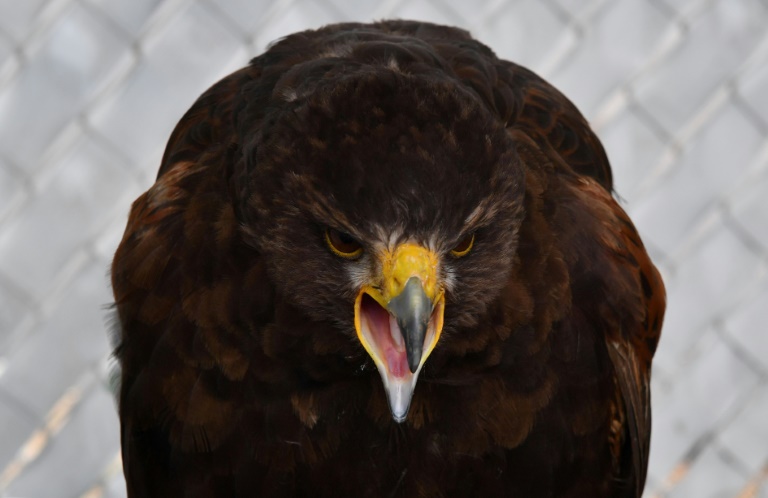‘They should be embarrassed’: Mpofu slams charges as disciplinary hearing postponed
Far from the crowds of passengers, lines and passport control, Madison spreads his wings on the side of a runway at Mexico City's international airport, the busiest in Latin America.
He is one of several peregrine falcons deployed to prevent “bird strikes” — a hazardous collision between birds and planes that can have dangerous and even catastrophic consequences.
In 2009, for instance, a US Airways jet had to set down on the Hudson River in New York after a flock of birds took out its engines. In January this year, a Mexico-bound KLM flight made an emergency landing after hitting birds on take-off in the Netherlands.
“It’s dangerous. Birds don’t mix with planes. They can hit a turbine,” Oscar Chavez, a 26-year-old who is one of the biologists handling the falcons, told AFP.
Each day, Madison and another peregrine falcon named Ilse are on duty at the airport, which sees 44 million passengers pass through it each year.
“The other birds realize a predator is around and they disappear,” said Nayely Flores, who is in charge of animals at the terminal.
Getting Madison ready requires a daily procedure that Chavez said was like a ritual: attaching a tracking tag to his leg while dangling quail meat to distract him.
– No kills –

Depending on the weather, Madison can soar aloft for two hours at a time. Like all raptors, he likes to float in warm air currents while scanning below for targets.
These days, however, the days in Mexico’s capital are cooler, limiting his forays. Still, the goal is being met and no other birds are spotted in the vicinity.
Swallows, kestrels and kites are among the species of bird that Madison and Ilse like to hunt.
Before 2014, airport authorities used raptors to swoop down and kill their prey as a way of keeping the runways clear.
But now, the falcons are trained to fly and keep the other birds away by their threatening silhouette in the sky. That way, biologists avoid protected species being ripped apart by the falcons’ beaks and claws.
“If that ever happened, we could get fined” by environmental agencies, Flores said.
The new method also has an advantage in that the falcons are not gorging on prey, which would result in them becoming too sated to want to fly aloft again.
– Other birds of prey –
A specially trained dog being released to scare away birds at Mexico City’s international airport
Peregrine falcons are not the only birds of prey deployed at the airport.
A blue-gray aplomado falcon called Panchito and three Harris’s hawks also fly as sentinels over the tarmac. One of the hawks is named Loca — crazy in English — because of her aggressive nature.
Because they fly low, these carnivorous birds can be used close to boarding halls where there are more plane movements.
But there are other, less spectacular animals at work, too.
The team of biologists can also call on dogs trained to chase birds away from the ground between runways.
And insect populations in the area are kept in check through chemical products, robbing the nuisance birds of a source of food.
At the end of the day, the animals — feathered and furred — are ushered into a hangar next to the airport for a night’s rest. In the meantime the buzzing facility nearby keeps on with its frenetic activity.
Download our app